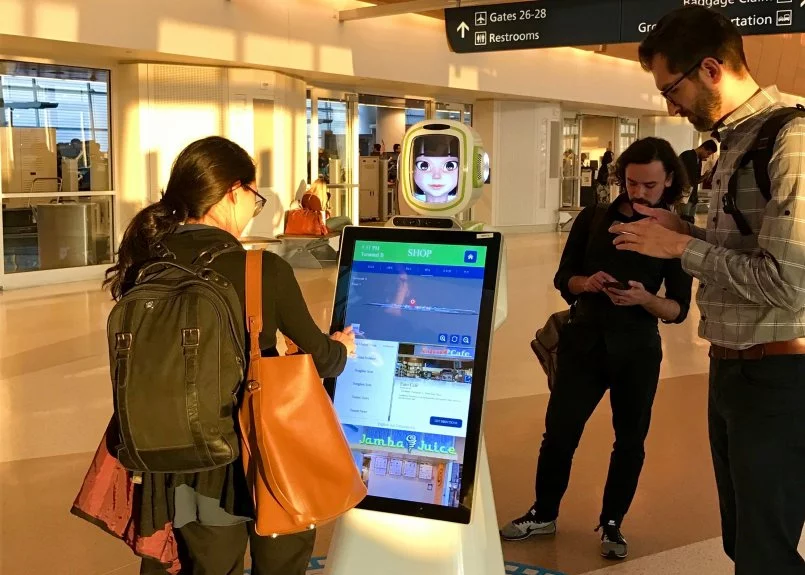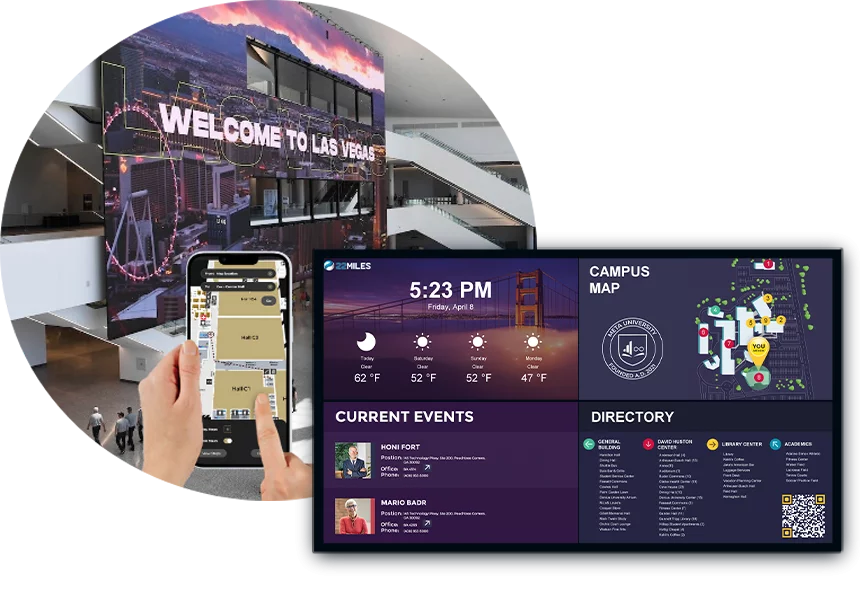Washington D.C Government Agency Upgrades to New Free Standing Digital Signage System to Advance Facility Wayfinding
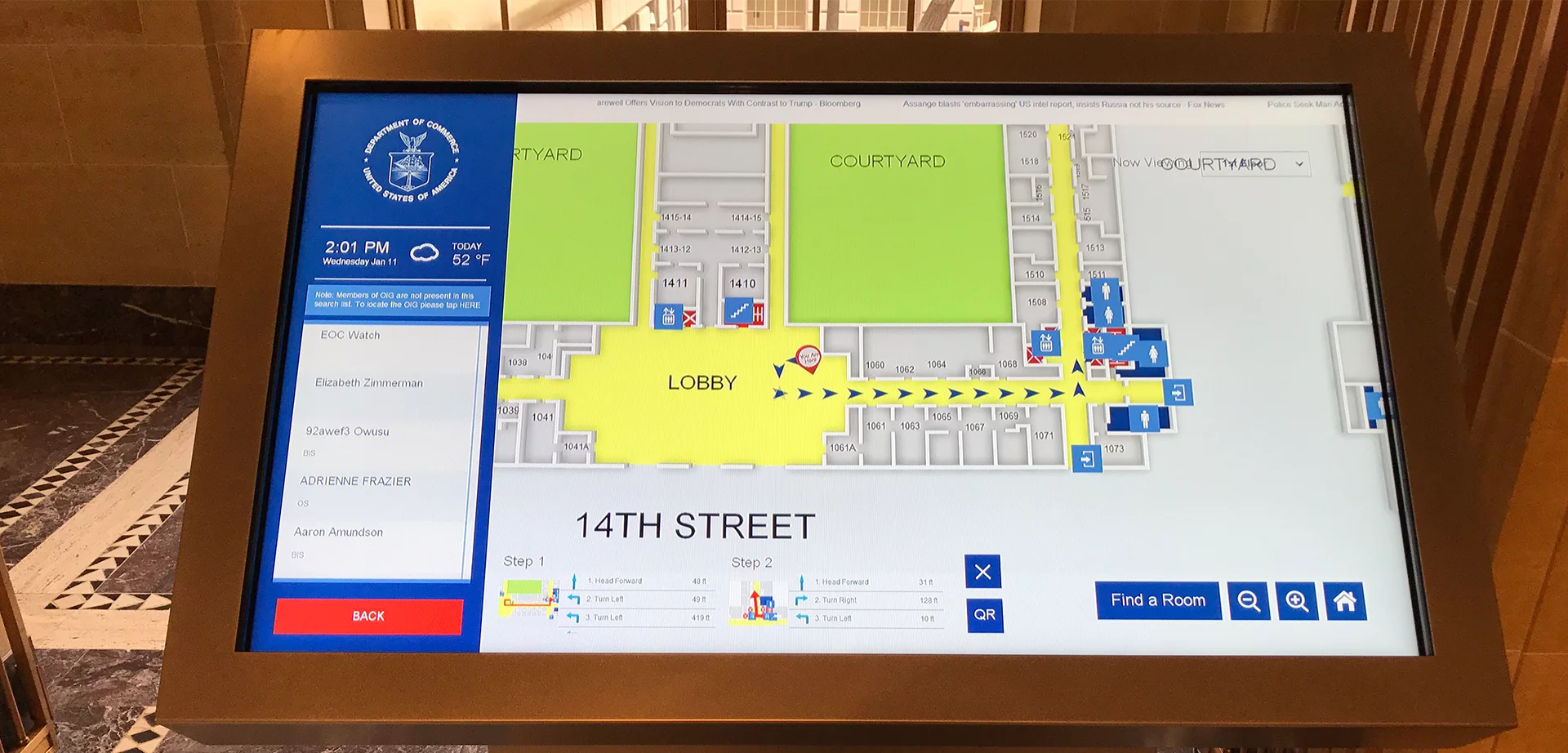
The Client
A large government agency in Washington DC experiences an influx of daily meetings with a steady flow of visitors. With 12 floors, 8,000 rooms, and ongoing renovations, guests and employees often had trouble navigating through the large facility. The agency sought a solution.
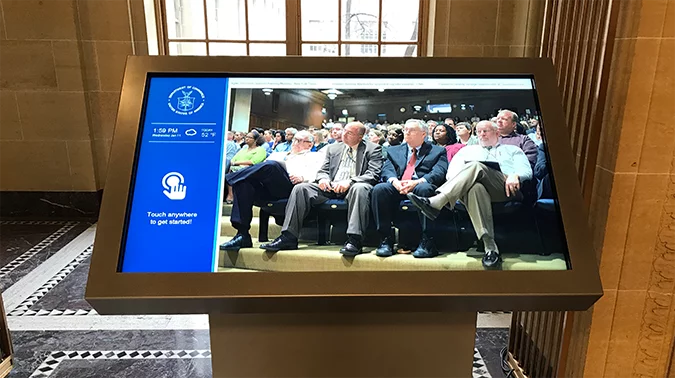
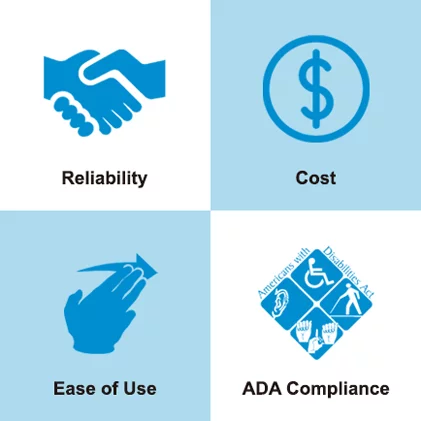
The Challenge
As a government agency, there was a strong need for a cost-effective solution that could efficiently provide accurate information and directions to events and meetings for the facility of 12 floors, 8,000 rooms with ongoing renovations. Staff found it cumbersome to maintain the facility’s static signage due to frequent schedule changes and updated floor plans from those renovations.
The major pain-point was the existing signage they had was outdated, inefficient and physically exhausting to constantly change. They began searching for a compressive solution that was easy to manage and fully scalable. The agency also required a solution that would be ADA compliant and meet the requirements set forth in Section 508 of the Rehabilitation Act of 1973, which “requires the federal government to ensure that the electronic and information technology that it develops, procures, maintains, or uses is accessible to persons with disabilities” (ADA.gov).
The Solution
Three 55” multitouch digital signage wayfinding kiosks were deployed at each of the main entrances of the building. The kiosks objective was to welcome the building guests and employees while providing user-friendly directions and information.
The digital signage kiosks software was powered by 22Miles Publisher Pro Digital Signage and Wayfinding editing Software. Built into the kiosks UI (user interface) is a dynamic pinch and zoom facility 3D map that features a searchable directory with on-screen pop-up keyboard enabling for search by floor, room, last name, main office or popular destination. To adhere to ADA requirements audio speakers for voice over was included within the digital kiosks design, and QR code was added allowing for users to scan the code to receive a text message containing wheelchair accessible directions.
In addition to the wayfinding capabilities, a series of interactive information buttons were added to the UI delivering the agency’s internal information, Social Media Twitter Feed, Google Maps with 3D Earth Views of Surrounding Areas, Comments webpage with the onscreen keyboard, and in-window thumbnail links of corresponding agency websites.
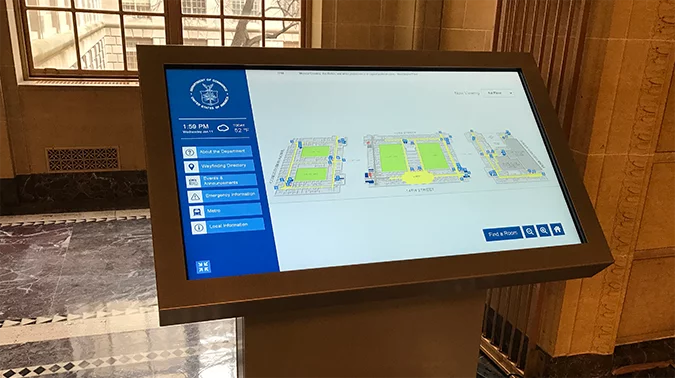
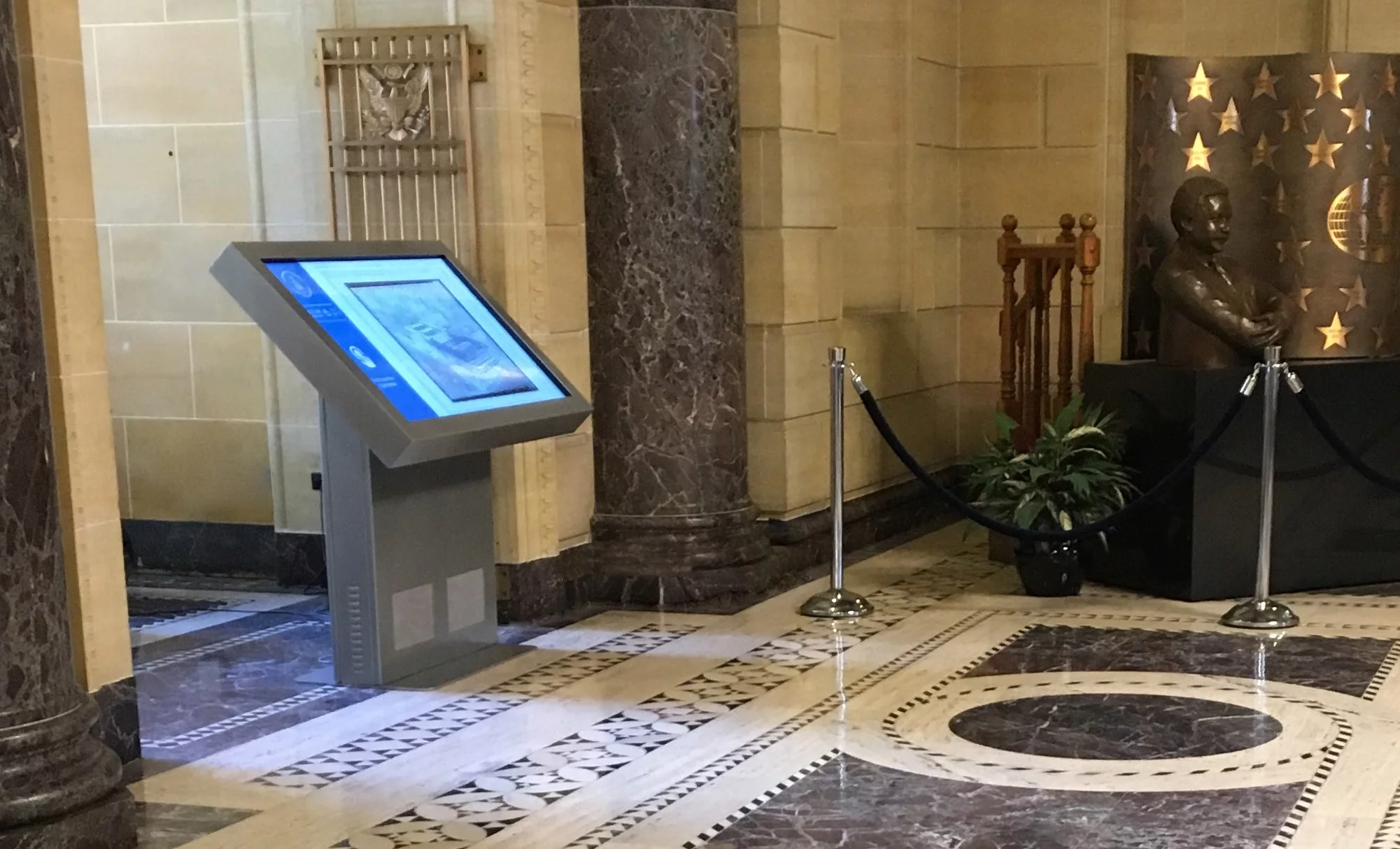
The Results
Five days after deployment, the government agency expressed interest in expanding the number of digital signage wayfinding kiosks within the building. This request was due to how beneficial the kiosks have been in easing facility wayfinding. The agency no longer needs to pay for the printing of static signage and saves on labor costs associated with changing the static signage.
Using 22Miles Publisher Pro 4.3 Digital Signage Software the agency can quickly update the entire signs interface with the included ability to easily make edits to the 3D floor plans. The map management feature is an option that is not available with any other digital signage wayfinding software provider in the world. This flexibility and 100% in-house management enables for the agency to keep the system visually engaging while ensuring all information being displayed is up-to-date with directions and agency announcements.
Furthermore, the solution return on objective, using 22Miles Publisher Pro 4.3 and its enterprise-based analytics platform, the agency is tracking all engagement of the most popular keywords and icons touched, which allows for continuous analysis and improvement of the solutions UI.
Solution Components
The hardware components used were Peerless-AV’s Landscape Digital Signage Kiosk Enclosure (KIL555-S) and ELO’s 55” 10 point infrared interactive displays. The kiosks enclosure featured a sleek freestanding digital signage kiosk enclosure while providing ample space for the required media player creating for an all-in-one safe and secure free-standing kiosk.
To further meet ADA requirements a set of directional audio speakers were added. The speakers provided turn-by-turn directions, as well as wheelchair accessible routes and text to speech audio for the visually impaired. By creating a direct beam of sound, the speakers generate direct audio. This mean the speaker’s project sound directly in front of the kiosk and audio cannot be heard to the left or right of the kiosk. This prevents unnecessary noise pollution.
Collaborating Partners: Peerless-AV & ELO

